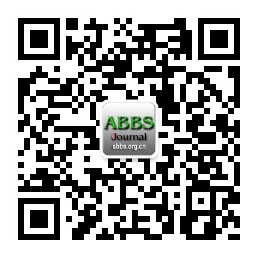博文
ABBS: Procyanidins against S. aureus
||
Antimicrobial activity and mechanism of Larch bark procyanidins against Staphylococcus aureus
Xinchao Li, Congfen He, Liya Song, Ting Li, Shumei Cui, Liping Zhang, and Yan Jia
Beijing Key Laboratory of Plant Resources Research and Development, School of Science, Beijing Technology and Business University, Beijing 100048, China
Acta Biochim Biophys Sin 2017, 49: 1058–1066; doi: 10.1093/abbs/gmx112
Larch bark procyanidins (LBPCs) have not only antioxidant and antitumor properties, but also strong bacteriostatic effects. However, it is not clear about the antibacterial mechanisms of LBPC. In this work, the antibacterial effects and mechanisms of LBPC on Staphylococcus aureus were studied in the aspects of morphological structure, cell wall and membrane, essential proteins, and genetic material. The results showed that LBPC effectively inhibited bacterial growth at a minimum inhibitory concentration of 1.75 mg/ml. Bacterial morphology was significantly altered by LBPC treatment, with the cell walls and membranes being destroyed. Extracellular alkaline phosphatase content, bacterial fluid conductivity, and Na+/K+-ATPase and Ca2+-ATPase activities in the membrane system were all increased. In the energy metabolic systems, the activities of succinate dehydrogenase, malate dehydrogenase, and adenosine triphosphatase (ATPase) were all decreased, resulting in a slowdown of metabolism and bacterial growth inhibition. Changes of protein content and composition in the bacteria suggested that the protein expression system was affected. In addition, LBPC was found to bind to DNA grooves to form complexes. Thus, LBPC has a very strong inhibitory effect on S. aureus and can kill S. aureus by destroying the integrity and permeability of the cell wall and cell membrane, affecting protein synthesis, and binding to DNA.

S. aureus treated with Larch bark procyanidins
阅读原文: http://www.abbs.org.cn/arts.asp?id=4233
获取全文: abbs@sibs.ac.cn
相关论文:
2 Structural features of procyanidin interactions with salivary proteins
3 MicroRNA-19a/b mediates grape seed procyanidin extract-induced anti-neoplastic effects against lung cancer
4 Absorption and urinary excretion of procyanidin B2 [epicatechin-(4 beta-8)-epicatechin] in rats
6 Modification of collagen with a natural cross-linker, procyanidin

https://blog.sciencenet.cn/blog-592748-1191879.html
上一篇:ABBS: Trx1/Prdx2 play a role in cardiac hypertrophy
下一篇:ABBS: Heterogeneity of perivascular adipose tissues